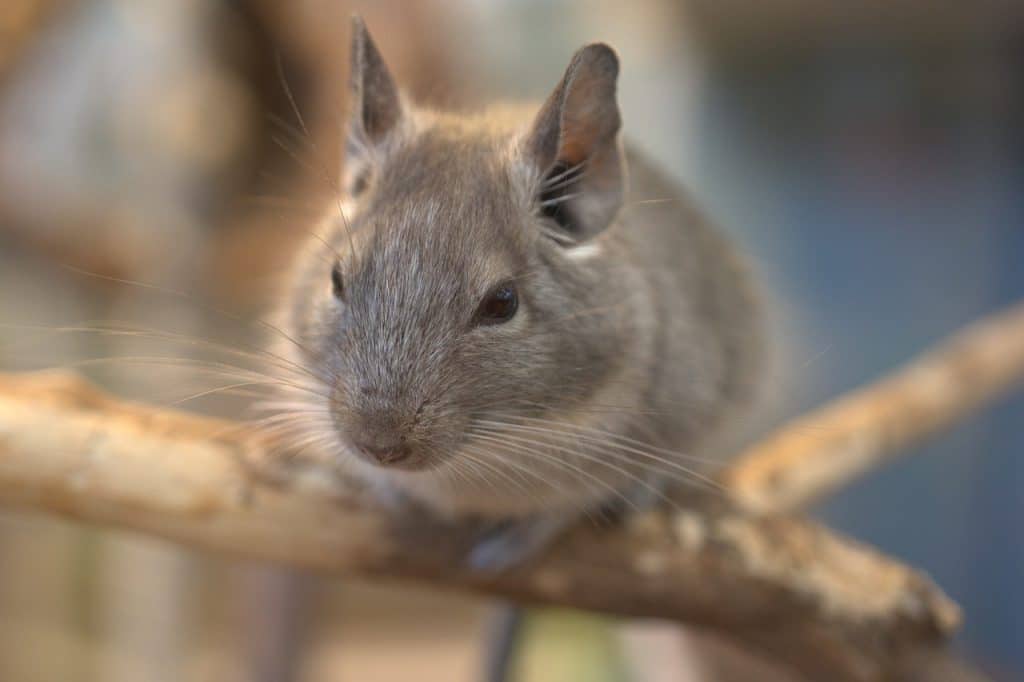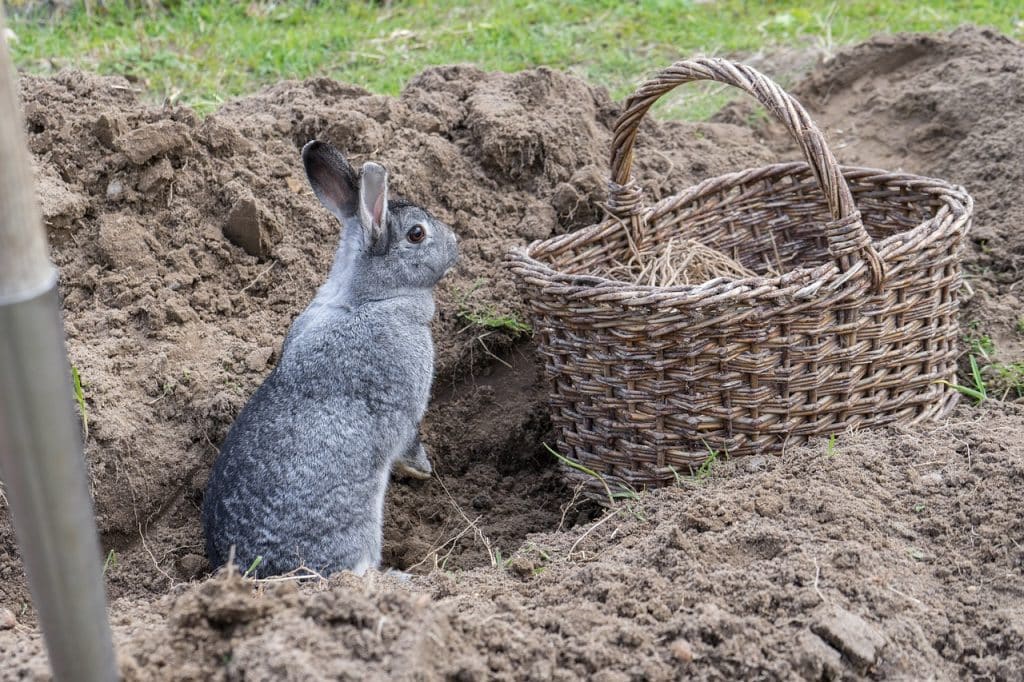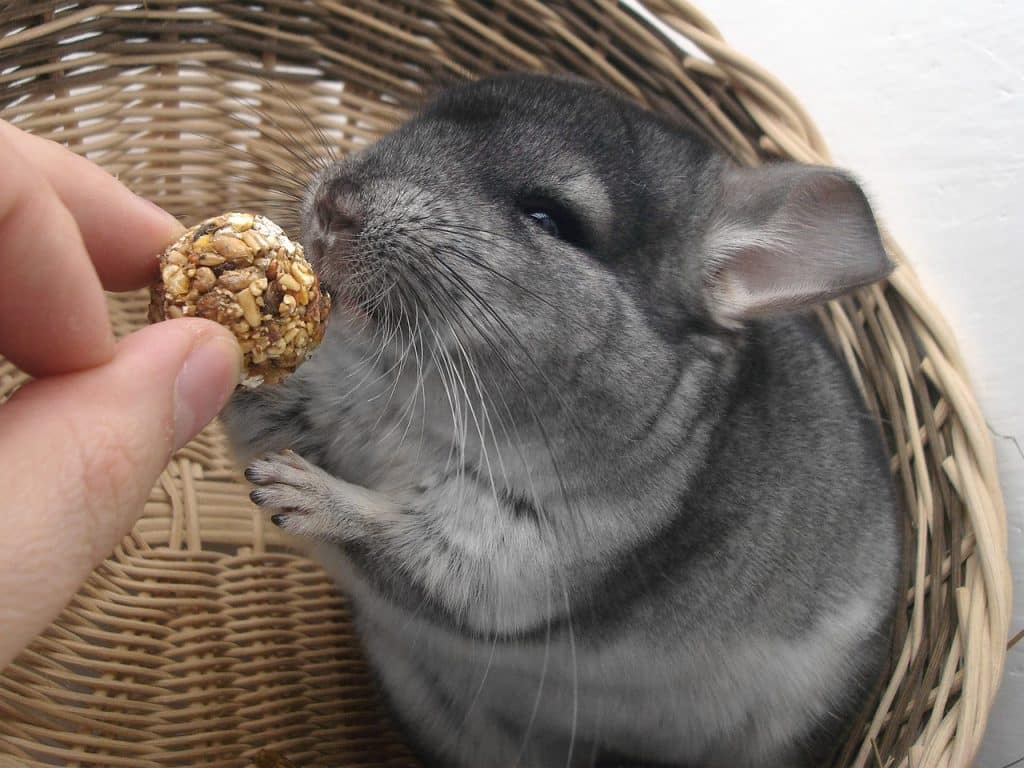
Chinchillas, small, nocturnal animals that live at night, are active but restful during the day. These cute rodents are native to South America. If they can, they want to eat, play, hunt, and sleep at the exact same time every night.
They are easy to train and can be tamed if they are handled well from a young age. They do not show the same affection as a normal dog or cat, but they are more gentle than most dogs and cats. When they are being held during the day, they will sleep on their owners, which can feel like cuddling. There are two types of Chinchillas, and many colors to choose from. Let’s take a look at all the options.
Two Chinchilla Breeds
There are two types of Chinchillas: short-tailed Chinchillas, and long-tailed Chinchillas. Before adopting a Chinchilla, it is important to be aware of the differences in each breed. Here’s what you should know.
The Long-Tailed Chinchilla
The Chinchilla breed is known for its thick, dense fur which keeps them warm in colder environments. They don’t seem to heat up in warmer climates like Arizona. They are large and dark with big, deep eyes. They are safe to be around children because they have weak claws.
They can move around with ease thanks to their agile legs. They also have the ability to jump quickly and stand up well. As adults, long-tailed Chinchillas can grow up to 9-14 inches in length. They have bushy tails and cute little faces. As adults, these rodents can eat up to one pound.
Today, the highest concentration of long-tailed Chinchillas can be found in the mountains of Chile. They are attracted to higher elevations, and will happily live at elevations up to 16,000 feet. The long-tailed Chinchillas mainly eat vegetables, roots and moss. They will eat insects and bird eggs from time to time.
The Chinchilla species is used to live in large groups of relatives. These animals can live with hundreds of other animals at once. Males tend to be dominant and females can be more aggressive toward each other, especially when they are not growing up together.
The Short-Tailed Chinchilla
This rodent species, also known as the Peruvian Chinchilla or the Bolivian Chinchilla, is also called the short-tailed Chinchilla. It can be found in the United States. This Chinchilla breed is endangered so they won’t be found in pet shops. They have the same physical characteristics as long-tailed Chinchillas but tend to have thicker shoulders than their counterparts and shorter tails.
They like to hide underground in order to get shelter from the elements, especially during winter. They are found in the Andes mountains of Bolivia, Peru, and Chile. The short-tailed Chinchilla, which is endangered, is being farmed for its fur, which is luxurious, soft, and dense. The rodent’s home countries have tried to ban international farming.
7 Different Colors
There are seven colors available for both Chinchilla breeds. Before you decide on a Chinchilla for your family, here are some things to know about each variation.
1. White
Although their ears are darker than their body, white Chinchillas do not have the genetic ability to produce color. True white Chinchillas don’t have any yellow or beige coloring. They may appear silvery-colored, but they are not. This rodent generally has white fur.
2. Black
Although mostly black, the Chinchilla color has lighter sides and sometimes even white. Their ears and mouths are often lighter. Many black Chinchillas are white-colored with black stripes on their feet and have small white spots on their stomachs. These rodents appear almost black even when seen from close range. To create a baby with an almost violet color, you can cross the black Chinchilla with Chinchillas of lighter colors.
3. Beige
This Chinchilla color is more similar to champagne than any other. Their stomach is often brighter than the rest, and their eyes appear lighter than other Chinchillas. Some people consider their eyes purple, while others see them as gray.
4. Purple

These brilliant Chinchillas turn purple when they reach adulthood by combining ebony and violet genes. Their bellies are usually darker and often grey. Violet Chinchillas should not be bred together as it can cause the birth of a recessive gene that renders the babies uncolored or otherwise affects their health.
5. Brown
The breeding of black and beige parents results in brown Chinchillas. Their paws, mouths, and bellies are usually white. The rest of their bodies are velvety and soft, however.
6. Grey

All-natural grey Chinchillas are available. These animals are born naturally with a wonderful blend of black-white that gives them a deep grey color. Like most Chinchillas, these Chinchillas have white underbellies.
7. Pink
They should be called pink-and-white Chinchillas. Their base coat is white with pinkish patterns all over. They have pinkish tips at the ends, but it is possible to examine them closely. It is possible to mistake many pink Chinchillas for white Chinchillas.
Our Last Thoughts
Many beautiful Chinchillas are out there, waiting for a loving home that will take care of them and provide them with the safe space they need during the day. They are great pets for teens who have time to spend with them in the evenings. They are easy to care for no matter where they live. Are you thinking of adopting a Chinchilla? If yes, which type and what color? We would love to hear your thoughts! Please leave your thoughts below in the comments section.
What is the most uncommon chinchilla color?
The Goldbar chinchilla is the most unusual color and mutation.
Why can you not get a chinchilla wet?
If a chinchilla gets wet, the thick hair performs a good job of keeping the moisture in. The term “responsibility” refers to the act of determining whether or not a person is responsible for his or her own actions.
What temperature is too chilly for chinchillas?
Now that you know what a healthy chinchilla’s body temperature is, you may be asking what temperature range you should maintain in the space where your chinchilla is kept. Generally, we recommend keeping your chinchilla in an environment that is no warmer than 70o F and no colder than 64o F.
What exactly is a Rex chinchilla?
Chinchilla rex has a well-proportioned physique with a medium head, robust hind legs, and upright ears, weighing between 2.72-3.62kg (6-8 pounds). Due to the challenges in breeding to the finest grade, the Chinchilla rex is not suitable for inexperienced breeders.
Do chinchillas snuggle with you?
Chinchillas are friendly. While chinchillas prefer not to snuggle, they are nonetheless incredibly loving with their pet parents. They are naturally curious and like being out of their chinchilla cages whenever possible—supervised by their pet parent, of course!
Do chinchillas stink?
To summarize. Chinchillas don’t have a distinct odor, but their cage has to be cleaned frequently to keep them clean. Even if you can’t use typical cleansers and fresheners, there are a variety of methods to keep your chinchilla’s house clean and smelling fresh all of the time.
Do chinchillas enjoy having their ears rubbed?
Chinchillas like having their ears and chins softly massaged or rubbed – you can observe how they do this to one other.
How can you know whether a chinchilla is happy?
A calm chinchilla that has bonded with you will prefer you to sit on the floor and let them jump all over you, while they make little chatting sounds combined with some enthusiastic little squeaks. Some may even like a little cuddling. A giddy chinchilla will eat popcorn and jump around all over the place.
What is the most common chinchilla species?
The long-tailed chinchilla and the short-tailed chinchilla are the two most prevalent chinchilla breeds, each having its own particular features.